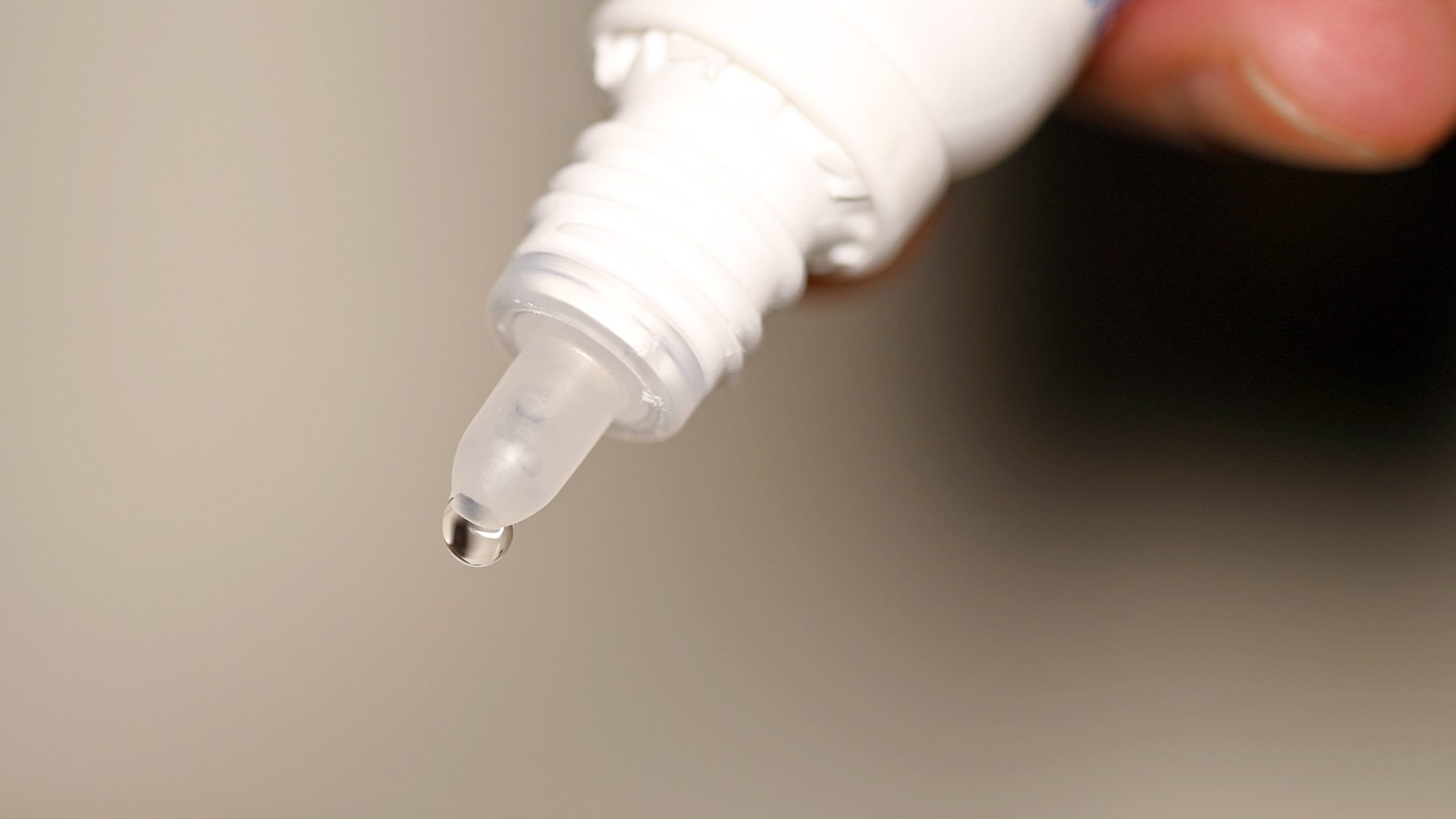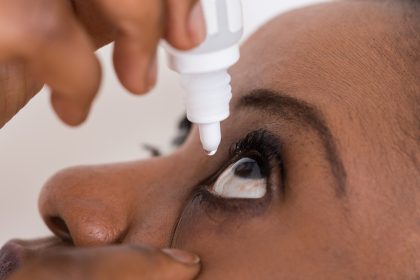Consumers across the United States should immediately check their medicine cabinets following a significant recall involving thousands of eye care products. On April 23, federal regulators announced a recall encompassing more than 75,000 cases of ophthalmic solutions, including several popular artificial tear products and lubricating eye drops. This widespread action stems from manufacturing concerns that could potentially affect product sterility and safety.
The scope of the eye care recall
The recall, initiated by BRS Analytical Service, LLC, involves five specific ophthalmic products distributed by AvKARE. These products were distributed nationwide over a nearly two-year period, reaching pharmacy shelves and medicine cabinets across the country between May 26, 2023, and April 21, 2025.
What makes this recall particularly concerning is the essential nature of these products. Eye drops and artificial tears serve as daily necessities for millions of Americans who rely on them to manage dry eye conditions, contact lens discomfort, and various eye irritations. The widespread distribution and everyday use of these products amplify the significance of this safety action.
Federal regulators identified “manufacturing cGMP deviations” during their inspection of the production facilities. These deviations from Current Good Manufacturing Practice regulations suggest potential lapses in the strictly controlled processes designed to ensure consistent product quality, purity, and sterility.
While authorities have not yet linked these manufacturing issues to specific adverse events, the voluntary recall was initiated proactively to prevent potential complications from compromised products. The regulatory classification of this recall as Class II indicates that while the products could potentially cause temporary or reversible health issues, the probability of serious adverse health consequences remains remote.
Five specific products affected by the recall
Consumers should examine their eye care products carefully, checking for the following specific items included in the recall:
- Artificial Tears Ophthalmic Solution (NDC# 50268-043-15)
- Carboxymethylcellulose Sodium Ophthalmic Gel 1% (NDC# 50268-066-15)
- Carboxymethylcellulose Sodium Ophthalmic Solution (NDC# 50268-068-15)
- Lubricant Eye Drops Solution (NDC# 50268-126-15)
- Polyvinyl Alcohol Ophthalmic Solution (NDC# 50268-678-15)
Each of these products serves a slightly different purpose in eye care, though all generally help lubricate and protect the surface of the eye. The artificial tears and lubricant solutions typically provide temporary relief for dry, irritated eyes, while the carboxymethylcellulose products offer longer-lasting moisture retention with their gel-like consistency.
The National Drug Code (NDC) numbers provided can help consumers and healthcare providers precisely identify the affected products. These unique product identifiers appear on packaging and help distinguish between similar-looking items that may not be included in the recall.
For complete identification, consumers should also check specific lot numbers and expiration dates against the detailed information provided in the official recall notice. The manufacturer has established a dedicated recall page where this information can be easily referenced.
Why quality control matters in eye care products
The importance of stringent quality control for ophthalmic products cannot be overstated. Unlike many other medications that enter the body through the digestive system, eye drops bypass many of the body’s natural defense mechanisms and deliver ingredients directly to the delicate tissues of the eye.
This direct application makes the sterility and purity of eye care products particularly crucial. Even minor contamination or quality issues could potentially lead to eye irritation, infection, or more serious complications. For individuals with compromised immune systems or existing eye conditions, these risks may be further elevated.
The cGMP regulations govern numerous aspects of pharmaceutical manufacturing, including facility cleanliness, equipment validation, raw material testing, and finished product analysis. These comprehensive standards ensure that products consistently meet quality specifications throughout their shelf life.
When deviations from these standards occur, they raise concerns about various aspects of product quality. While not all deviations necessarily result in harmful products, they do indicate potential weaknesses in the manufacturing process that could affect the safety, efficacy, or consistency of the final product.
The manufacturer’s acknowledgment that “it is not possible to rule out patient risks” highlights the precautionary nature of this recall. Rather than waiting for adverse events to occur, the company has chosen to remove potentially problematic products from the market proactively.
Potential health implications
Though classified as a Class II recall—indicating a lower probability of serious health consequences—consumers should understand the potential risks associated with using compromised eye care products.
Non-sterile eye drops can potentially introduce bacteria, fungi, or other contaminants directly to the eye’s surface. This contamination can lead to conjunctivitis (pink eye), keratitis (inflammation of the cornea), or in rare cases, more serious infections that could potentially threaten vision.
Products with quality issues may also have inconsistent concentrations of active ingredients, potentially reducing their effectiveness or causing unexpected irritation. For individuals who rely on these products to manage chronic dry eye conditions, this inconsistency could lead to discomfort and worsening symptoms.
The preservatives used in multi-dose eye drop formulations play a crucial role in maintaining product sterility between uses. If manufacturing deviations affected these preservative systems, the products could become contaminated even after initial opening, creating an ongoing risk with each application.
For contact lens wearers who might use some of these products, the risks potentially extend to lens-related complications. Non-sterile eye drops used in conjunction with contact lenses could transfer contaminants to the lenses themselves, creating a reservoir for potential infection.
While the FDA has indicated that serious adverse health consequences appear remote in this case, the agency emphasizes that even temporary eye irritation or mild infection warrants caution, particularly given the sensitive nature of ocular tissues.
What consumers should do immediately
If you discover any of the recalled products in your home, taking prompt action can help protect your health and that of your family members. The following steps provide a clear path forward:
First, discontinue use of the affected products immediately. Even if you’ve been using the product without apparent issues, the nature of manufacturing deviations means that quality problems might not be immediately obvious to users.
Secure the product in its original packaging if possible, as this preserves important identifying information such as lot numbers and expiration dates. This information will be helpful both for obtaining a refund and for any follow-up inquiries from regulators tracking the recall’s effectiveness.
Visit the AvKARE recall page to report your product using their designated form. This reporting helps manufacturers and regulators understand the reach of recalled products and ensures you receive appropriate follow-up information.
Arrange for product return to receive a full refund, including shipping costs. The manufacturer has committed to covering all expenses associated with the return process, eliminating financial barriers to participating in the recall.
Contact your healthcare provider if you’ve recently used these products and experience any unusual symptoms such as increased redness, pain, light sensitivity, blurred vision, or discharge. While serious adverse effects appear unlikely, monitoring for any changes in eye health remains prudent.
For any questions about the recall process itself, consumers can reach out directly to customer service at the email address provided by the manufacturer: [email protected].
Finding safe alternatives
With these products now unavailable, consumers who rely on artificial tears or lubricating eye drops may need to find suitable alternatives. Several approaches can help navigate this transition:
Consult with a pharmacist about equivalent products not affected by the recall. Pharmacists can often recommend similar formulations from different manufacturers that would provide comparable benefits.
When selecting replacement products, examine the active ingredients list to find options containing the same or similar ingredients as your recalled product. For instance, if you used the recalled carboxymethylcellulose products, look for this same ingredient in alternative brands.
Consider preservative-free formulations if you have sensitive eyes or use eye drops frequently. These products typically come in single-use containers that maintain sterility without chemical preservatives that might cause irritation in some individuals.
For those using prescription eye medications in addition to over-the-counter drops, consult with your eye care provider before making any changes to your regimen. Some artificial tears may interact with prescription medications or affect how they work.
If you experience persistent dry eye symptoms that worsen when changing products, schedule an appointment with an eye care professional. Sometimes recall situations provide an opportunity to reassess overall eye health and treatment approaches.
The broader context of eye product safety
This recall follows several other high-profile safety issues involving eye care products in recent years. These incidents have heightened awareness about the potential risks associated with ophthalmic solutions and the importance of manufacturing oversight.
Federal regulators have responded by increasing scrutiny of eye care product manufacturing facilities, particularly those producing preservative-free formulations that lack antimicrobial ingredients to prevent contamination after opening. This enhanced oversight aims to prevent future quality lapses that could endanger consumer safety.
Consumers can play an active role in ensuring eye product safety by regularly checking for recalls through resources like the FDA’s recall database or by signing up for safety alerts. These proactive measures help ensure timely awareness of potential issues with products you use regularly.
When purchasing eye care products, examining packaging integrity before use provides an additional safety check. Look for any signs of damage, leakage, or discoloration of the solution, and check that safety seals remain intact. If anything appears unusual, return the product without using it.
Proper storage also affects eye drop safety. Most products should be stored at room temperature unless otherwise indicated, and multi-dose bottles should be closed tightly after each use to prevent contamination. Additionally, following expiration dates and discarding products at the recommended intervals after opening helps maintain safety.
Moving forward with better informed choices
This recall serves as an important reminder about the critical intersection of manufacturing quality and consumer health, particularly for products applied directly to sensitive areas like the eyes. While the immediate concern involves removing potentially problematic products from use, the situation also creates an opportunity for consumers to become more informed about the products they use daily.
When selecting future eye care products, consider researching manufacturers’ quality control history and compliance record. Companies with strong safety profiles and transparent quality assurance processes often produce more reliable products.
Understanding the difference between preservative-containing and preservative-free formulations can help consumers make appropriate choices based on their specific needs and usage patterns. Frequent users might benefit from preservative-free options, while occasional users might find traditional formulations more convenient and economical.
For those managing chronic dry eye or other ongoing eye conditions, this recall highlights the importance of maintaining an open dialogue with eye care professionals about all products used—both prescription and over-the-counter. These discussions ensure a coordinated approach to eye health that accounts for potential interactions and cumulative effects.
By staying informed about product recalls, understanding the reasons behind them, and taking appropriate action when necessary, consumers can actively participate in protecting their own health and contributing to a safer marketplace for everyone.















